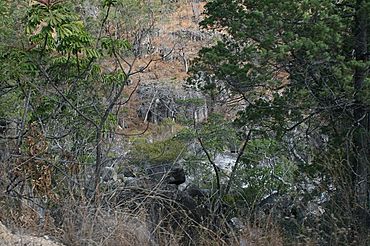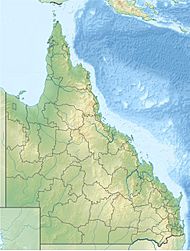Mount Lewis National Park facts for kids
Quick facts for kids Mount Lewis National ParkQueensland |
|
|---|---|
|
IUCN Category II (National Park)
|
|
 |
|
| Nearest town or city | Julatten |
| Established | 2009 |
| Area | 278.6 km2 (107.6 sq mi) |
| Managing authorities | Queensland Parks and Wildlife Service |
| Website | Mount Lewis National Park |
| See also | Protected areas of Queensland |
Mount Lewis National Park is national park in both the Shire of Mareeba and Douglas Shire of Far North Queensland, Australia. It is adjacent to both Daintree National Park and Mount Spurgeon National Park. It is part of the Wet Tropics of Queensland and Einasleigh Uplands bioregions. The park lies within the catchment areas of the Mitchell River, Mossman River and Daintree Rivers. Mount Lewis National Park preserves part of the Mount Carbine Tableland.
In 2009, Mount Lewis Forest Reserve and Riflemead Forest Reserve were combined to form Mount Lewis National Park. The landscape is mountainous and covered by forest. About half of 1% of the national park is classed as wetlands.
Contents
Environment
The area is a biodiversity hotspot. In total, 43 rare or threatened species have been identified in the park.
The Mount Lewis spiny crayfish is an endemic species. Also found in the park are golden bowerbirds, blue-faced parrotfinch, giant blue earthworms, cinereus ringtail possum, masked white-tailed rat, red-bellied black snake as well as several species or rare frogs. In February 2017 small population of endangered northern bettongs had been discovered in the National Park.
Recreation
Four-wheel driving and trail-bike riding are the most popular recreational activities. Several clearings along Mount Lewis Road have been identified as good locations for spotting a large variety of birds.
Access
Access is provided by Mount Lewis Road. This road leaves the Mossman Mount Molloy Road just north of Julatten. A number of private tour companies operate in the park.
Facilities
Camping is not permitted. There are no dedicated day-use areas established.


